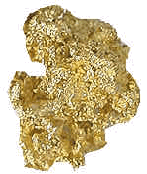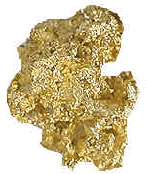Kokoweef Timeline |
|
|
|
|
|
|
|
|
|
1885 |
|
|
Earl Dorr was born near Colorado Springs. He was the eldest of seven brothers: Earl, Joe, George, John, Willard, Denman, and Lee Dorr. |
|
|
|
|
|
|
|
1890 – 1902 |
|
|
According to legend, three Indian brothers, Oliver, George and Buck Peysert, worked as ranch hands at the Dorr Ranch during Earl Dorr’s boyhood. |
|
|
|
|
|
|
|
1903 – 1905 |
|
|
The legend relates that the three Indian brothers left the Dorr Ranch. They then rediscovered a passageway descending to an underground cavern, as described by their tribal elders. From this monumental cave, and underground river, they recovered $57,000 in gold at $20 per ounce during a 6-week stay. Legend also reveals that George was killed in an accident on the river’s bank. This site would become known as the Kokoweef River of Gold. |
|
|
|
|
|
|
|
1906 |
|
|
Working in San Francisco, just after the great earthquake, Earl Dorr was reported to have encounterd the two surviving Indian brothers, Buck and Oliver. Earl said in his affidavit that he received extensive information regarding the Kokoweef River of Gold from the Peysert brothers. There is a rumor that the indian brothers gave Earl a map to the underground cavern system. However, Ray Dorr (Earl’s Nephew) said that Earl had received no map from them. |
|
|
|
|
|
|
|
1907 – 1922 |
|
|
Earl, his brother Joe, and his father started and maintained a farm fifty miles away from what is currently known as Kokoweef Peak in the New York mountain range, until the arid weather became inhospitable for agriculture. |
|
|
|
|
|
|
|
1922 – 1926 |
|
|
In his affidavit in the November, 1940, California Mining Journal Earl Dorr said that he rediscovered the entrance to the River of Gold cavern (believed by some to be located at Kokoweef peak), and laid in supplies for eventual descent. This affadavit did not provide the location of Earl’s entrance. |
|
|
|
|
|
|
|
1927 |
|
|
Earl Dorr’s affidavit stated that he enlisted aid from a civil Engineer, “Mr. Morton” from Tempe, Arizona, to help map structure and mineralogy of the cave system. Earl’s original plan to stay two days quickly turned to four days as they explored eight miles along the river, and were stopped by a waterfall. Upon exiting the cavern, each of the two men carried approximately 10 lbs., 7 oz. of gold bearing placer samples. Earl’s affidavit reported a May, 1927, assay by John Herman of Los Angeles that showed $2,144.47 per cubic yard at the then official price of $20.67 per ounce. Earl Dorr was allegedly unable to file claims over the legendary Kokoweef River of Gold because, years earlier, the prospector Pete Ressler (supposedly one of Butch Cassidy and the Sundance Kid’s Hole-in-the-Wall Gang) had filed fourteen mining claims in the Kokoweef Peak area. One of these claims was believed by some to be over Earl’s entrance, but it has not since been found within any of Pete Ressler’s claims, or elsewhere. |
|
|
|
|
|
|
|
1928 – 1933 |
|
|
Earl Dorr was said to have spent six years exploring in the area of the Ivanpah Mountains (where Kokoweef Peak is located), and in other nearby mountains for another entrance to the underground River of Gold cavern. Another historical source indicates that the entrance described in Earl’s affidavit was 3 1/4 miles from the 3,000 foot high cavern, and River of Gold target zone. That entrance has not been relocated since Earl allegedly blasted it shut. This was related by Earl’s Nephew Willard B. Dorr, Jr., (now deceased) in a personal interview with an EIN investor. Willard claimed to be a first-hand witness to this event, though he was unable to relocate the closed entrance before he died. |
|
|
|
|
|
|
|
1934 |
|
|
Earl Dorr signed a legal affidavit regarding what he and Mr. Morton observed while in the cavern. A later version of this was published in the California Mining Journal. The original affadavit is now property of the Crystal Cave Mining Corporation (CCMC). In his affidavit Earl claimed to have met with the surviving Peysert brothers at his home on November 10, 1934. He reported that they had recovered some of the largest gold nuggets ever fiound in California. They ostensibly sold their gold directly to the U.S. Mint, and banked the money in Las Vegas, NV, and Needles, CA. |
|
|
|
|
|
|
|
1935 |
|
|
The Wallace family read Earl Dorr’s story. From Earl’s affidavit they formed Crystal Cave Mining Corporation. |
|
|
|
|
|
|
|
1936 – 1938 |
|
|
The Wallace family spent time with Pete Ressler trying to acquire a lease on his fourteen claims. |
|
|
|
|
|
|
|
1939 |
|
|
The Wallace family purchased the fourteen claims from Pete Ressler for the sum of $5,000. |
|
|
|
|
|
|
|
1940 – 1946 |
|
|
Zinc was discovered on Kokoweef Peak, and extensively mined during World War II by the Crystal Cave Mining Company at the Carbonate King. The proceeds were used to help finance the continued search for the River of Gold caverns. |
|
|
|
|
|
|
|
1947 – 1963 |
|
|
The Kokoweef claims were patented by Crystal Cave Mining Company. Successive small groups of individuals continued the search for the underground river. |
|
|
|
|
|
|
|
1957 |
|
|
Earl Dorr died as a result of a mining accident, not leaving behind the answer to one of the world's great mysteries ... the secret locations of the Kokoweef River of Gold and its closed entrance. |
|
|
|
|
|
|
|
1964 |
|
|
The Crystal Cave Development Corporation was formed for the purpose of leasing this property to anyone interested in continuing the search for the underground river. |
|
|
|
|
|
|
|
1965 – 1970 |
|
|
The Schnar family began the excavation of Crystal Cave on the East side of Kokoweef Peak. Their name appears on wood over the Crystal Cave mine entrance, and above their excavations inside the mine tunnels. |
|
|
|
|
|
|
|
1971 – 1983 |
|
|
Legendary Kokoweef Cavern Incorporated continued the search through Crystal Cave for a passage to the underground cavern system and river. |
|
|
|
|
|
|
|
1984 |
|
|
Explorations Incorporated of Nevada (EIN) was formed to continue the search for the underground caverns and river. |
|
|
|
|
|
|
|
1985 – 2006 |
|
|
EIN developed tunnel systems in Kokoweef Peak mountain. In the latter part of this period they began electronic geophysical surveys, and deep drilling projects, purchasing and refurbishing their own deep drilling rig. Recent drilling penetrated the upper (1,100 foot deep) boundary of a massive induced polarization surveyed metal sulfide zone at the limit of the existing drill steel. Microscopic examination from drill shavings showed traces of gold and other valuable minerals. A 2,500 foot exploratory drilling program is now underway (using a deeper capability drill rig) to block out the metal sulfide zone and obtain mineral assays. If the assays are profitable, and/or the River of Gold cavern is penetrated below what could be the mother lode, then EIN will reform as Kokoweef, Incorporated, and enter the production phase. |
|
|
|
|
|
|
|
|
|
| |
|
|

